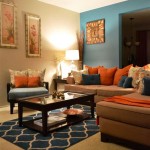School Room Decoration Ideas: Creating a Conducive Learning Environment
The physical environment of a classroom significantly impacts students' learning, behavior, and overall well-being. A thoughtfully decorated classroom can foster a sense of community, stimulate creativity, and provide a functional space for various learning activities. When planning classroom decor, educators should prioritize creating an organized, inspiring, and adaptable atmosphere that caters to the needs of all learners. The following points offer a range of ideas to enhance the learning environment.
1. Establish a Welcoming and Engaging Entryway
The classroom entryway provides the first impression for visitors. Consider utilizing this space to set a positive and inviting tone. Bulletin boards can display student work, class rosters, and announcements. Consider incorporating decorative elements like themed banners or seasonal displays. A welcome message or a quote promoting a positive learning environment can also have a positive effect. Ensure that the entryway is uncluttered and easily navigable, promoting a smooth transition for students.
2. Implement Color Psychology and Visual Stimulation
Colors influence mood and behavior. Employing color psychology in the classroom can help create a more conducive learning environment. Blue and green are often associated with calmness and focus, making them suitable for areas where concentrated work takes place. Yellow and orange can stimulate creativity and enthusiasm, while red should be used sparingly, as it can be overstimulating. The use of neutral tones as a backdrop allows for the incorporation of brighter accent colors. Furthermore, the use of visual aids, such as posters, charts, and maps, can help reinforce learning concepts. These visual elements can be organized strategically, ensuring that they are easily accessible and relevant to the curriculum. Avoid excessive visual clutter, as it can be distracting.
3. Optimize the Use of Wall Space
Wall space offers ample opportunities for educational displays and decorations. Designing interactive bulletin boards that change periodically with the curriculum content keeps the classroom relevant to the current learning objectives. Consider incorporating student-created artwork and projects. This can boost students' confidence and sense of ownership in the classroom. Use motivational quotes, positive affirmations, and inspirational posters to create a positive and supportive environment. Ensure that all displayed materials are easily readable and visually appealing.
4. Focus on Organization and Functionality
Classroom organization is crucial for an efficient learning environment. Designate specific areas for different activities, such as a reading corner, a writing station, and a science center. Utilize storage solutions like labeled bins, shelves, and cabinets to keep materials organized and accessible. Clearly label shelves and containers with pictures and words to help students easily find and return materials. Creating dedicated spaces for different classroom routines can minimize distractions, promote independence, and improve overall classroom management.
5. Incorporate Flexible Seating Options
Flexible seating arrangements cater to diverse learning styles and physical needs. Instead of traditional desks, explore options such as standing desks, beanbag chairs, wobble stools, and floor mats. These seating alternatives can increase student engagement and reduce restlessness. Allow students to choose their preferred seating arrangement whenever possible, providing them with a sense of autonomy. However, maintain a balance between flexible seating and traditional seating to accommodate various learning activities and assessments.
6. Foster a Sense of Community with Shared Space
Create a sense of community by incorporating shared space into the classroom design. Designate a specific area for group projects, discussions, and collaboration. This area can include a large table, comfortable seating, and easily accessible materials. Display student work prominently to promote a sense of contribution and belonging. Furthermore, establish classroom rules and guidelines collaboratively with students to encourage a common purpose.
7. Create a Climate for Literacy Development
Build an environment that promotes literacy across all subjects. Incorporate a variety of reading materials, including books, magazines, and newspapers, in the classroom library or reading corner. Ensure that these materials are age-appropriate and aligned with students' interests. Use word walls, vocabulary charts, and grammar posters to enhance language development. Encourage students to engage in reading activities, such as book clubs, read-alouds, and independent reading.

Classroom Decor Gallery Pacon Creative S

Classroom Decor Decoration Ideas Oriental Trading

Quick And Easy Middle School Classroom Decor Ideas Eb Academics

Classroom Decorations School Specialty

50 Classroom Decorations Ideas And Themes

8 Ways To Decorate Your Secondary Classroom American Board Blog

7 Amazing Classroom Decoration Ideas For Kindergarten

20 Best Classroom Decoration Ideas For Teachers

Classroom Decoration Ideas Funnycrafts Nursery Class Decor Kindergarten

Classroom Decoration S Easy Ideas Write On With Miss G
Related Posts







